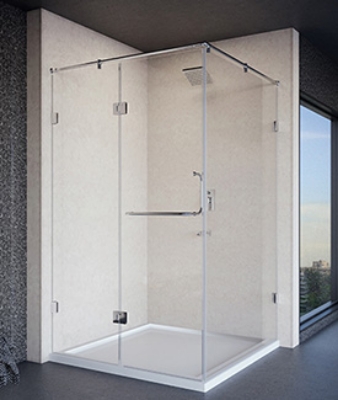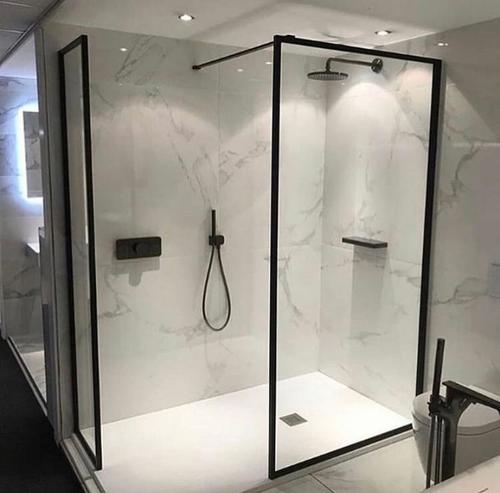Effortless Installation Methods for a New Shower Unit
Maintenance Sign-UpListed here in the next paragraph you will find additional exceptional insight with regards to How to Build a Shower Enclosure for Your DIY Bathroom.

An effective shower setup requires cautious planning as well as a great deal of job. In many cases, you will need to do three kinds of tasks: framing wall surfaces, setting up the plumbing, and completing walls.
Preparation
To start with, you need to decide on the type of shower that you want to mount. It is important to determine whether the picked shower can coping with specific systems as well as can control a safe level of water through the boiler. Most shower systems nowadays are designed to be adaptable to different water pressures (such as saved hot water and also chilly keys).
It is also important to take into account the water pressure and also the preparation of the piping and drainage for the shower
Various Kinds Of Shower Units
Approach
Relying on the sort of shower you want to install, the shower head should either be suited order to avoid its contact with the water in the bathroom listed below or the base tray, or it should have a check valve.
Before beginning, it is suggested to mark the positions of the shower head and control, and to prepare the pipe-work included. Furthermore, the drain system to get rid of the drainage will certainly need to be prepared. Both placements of the wire route and also the shower switch will certainly also require to be considered if an instant or electric shower system is being set up.
Use the direction overview supplied with the shower unit to fit the shower control.Before suitable the pipes that will supply the water to the shower system, it is very important to cut off the supply of water. In order to protect the pipes, they ought to be given a waterproof covering and additionally fitted with separating valves. The pipes can then be hidden into the wall and also smudged over to neaten the general appearance.
Fit the base tray, shower head, and installations.
Attach the major shower control to the pipelines that will certainly be supplying the water (This may require a female screw string adapter).
Reconnect the supply of water as well as test the pipelines for any kind of leaks, as some might need tightening up.
If you are installing an electrical shower, bear in mind to turn off the electrical energy supply before making any type of electrical connections. As soon as these links have actually been made (there should be assistance within the instruction manual), the power supply can be switched back on.
Readjusting Water Pressure to Suit Your Shower
The cold water storage tank can be lifted to a higher elevation (often as low as 150mm (6inches)) by installation a strong wood assistance below it - possibly made up of struts as well as blockboards. If you select this option, the primary and also circulation pipelines will certainly additionally need to be elevated to satisfy the brand-new elevation of the reservoir.
Additionally, a booster pump (a single pump or a dual/twin pump) can be fitted. Whichever type is picked, it should be attached into the power supply in order to run.
Piping as well as Drainage
It is best to make use of 15mm size supply pipelines, and also make the go to the shower as brief and straight as possible so as to keep optimal stress as well as minimise heat loss. Additionally, by minimising using arm joints for pipeline edges, you can decrease the resistance in the flow of the water system. You can achieve this by flexing the pipes rather.
Many Common Errors
How Do You Install a Shower? Follow This Guide
Installing a Shower at a Glance
Tools & Materials: Level, electric drill, caulk, hole saw, cedar shims, shower unit Step 1: Drill pilot holes Step 2: Prep fixture holes Step 3: Move unit into place Step 4: Caulk corners and base Step 5: Attach door Step 6: Install shower pan Whenever plumbing is involved in a DIY project, people worry about what might go wrong. The truth is that installing a shower isn’t that complicated, and you can save a lot of money by doing it yourself. You shouldn’t need to make any alterations to your plumbing to complete the job, and most of the tools you need will be provided in your new shower kit.
Can I Install a Shower Myself?
Even if you’ve never installed a shower before, you’ll find this to be a project that is perfectly suited for DIYers with a moderate level of experience. Whether you're doing a bathtub conversion or installing a new stall, most of what you need comes in shower kits that you can purchase from a hardware store. The first thing you need to do is determine what type of shower stall you want.
Single-panel stalls are the easiest to install because they come preassembled. All you need to do is put them in place. Multi-panel showers require a few additional steps, but you’ve got more control over the appearance of your unit. Multi-panel units are also much easier to handle if you’re going to do the installation without any help.
Be sure to take all appropriate safety precautions, such as wearing eye protection and gloves. When you’re removing or installing a shower unit, you might kick up debris that could hurt your eyes. You’ll also need to work with equipment that will get extremely hot, so be sure to have safety gloves handy.
Tools and Materials
2- to 4-foot level Electric drill with a 1/8-inch drill bit Caulk 2-inch hole saw Cedar shims The unit itself Before You Begin: Prep the Space
It’s highly important to measure your space accurately before putting the stall in. Measuring from the floor upward and from each corner outward will ensure you’ve got the right measurements. What you’re looking for is where the plumbing apparatuses are going to come through the stall. Transfer these measurements over to the back of your unit by drawing the locations of these holes using a pencil or marker.
Pull out your old shower and make sure to scrape off all the old caulking. Be thorough because you want to work with smooth surfaces for the best installation. Once you’ve pulled out your existing shower, you need to make sure that the floor is clean and dry. The best way to clean debris is with a shop vacuum, as it’ll soak up water and dirt together.
If you’re experiencing any plumbing issues, such as low water pressure, this is a perfect opportunity to solve them. Make sure that the pipes themselves are not in need of patching and clean your showerhead. When you turn the water back on after your project, check the pipes for signs of wear or disrepair. Anything beyond minor repairs should be handled by a plumber, and this is the best time to bring in a professional.
If the floor has any moisture at all, don’t proceed until it’s completely dry. The last thing you need is for the floor to rot or invite mold and mildew into your base. Once everything is dry, apply waterproof wallboard to the walls. This can be attached with screws or nails, then sealed with caulk so that water doesn’t seep into any crevices.

We had been shown that article about How to Install a Direct-to-Stud Shower Enclosure through a friend on our other web blog. Sharing is caring. One never knows, you will be helping someone out. Many thanks for your time. Don't hesitate to come by our site back soon.
Schedule A Free Estimate